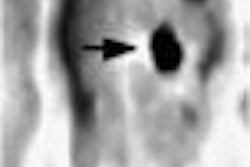Marconi Medical Systems announced today that it is collaborating with partner eV Products on a whole-body gamma camera with a cadmium zinc telluride-based solid-state digital detector. Marconi believes the new technology could revolutionize the nuclear medicine industry.
The Cleveland firm's basic premise in developing the system is that the nuclear medicine market needs new technology that is not limited by the lower spatial and energy resolution of current gamma cameras, which use scintillation crystals made from sodium iodide. The limitations can hinder diagnostic accuracy, resulting in late detection of diseases or missed opportunities for early detection, according to the company.
Although physicists have known for years that CZT would be an ideal material for medical imaging, it has been difficult to grow and process the material cost-effectively in the quantities necessary for large cameras -- CZT costs three to four times as much per area as sodium iodide.
One gamma camera developer, Digirad of San Diego, originally sought to use CZT in its Digirad 2020tc solid-state digital camera, but later switched to cesium iodide due to the costs involved in growing CZT. Digirad remains the only company with a commercially available solid-state digital gamma camera.
Marconi has found a way to use CZT that will allow it to produce an affordable unit, according to Piotr Maniawski, product planning manager for nuclear medicine at the company.
"The problem [with CZT] in the past has been that it is expensive," he said. "Our system is designed to allow the use of CZT in a way that makes it affordable but delivers significant improvement in spatial and energy resolution, resulting in increased lesion detectability."
Marconi’s partner in this endeavor, eV Products of Saxonburg, PA, is the 10-year-old subsidiary of II-VI, a manufacturer of laser optic materials, optics, components, electro-optical products, and radiation detection devices. eV Products grows the raw material for radiation detectors, and also does electronic component design and assembly at its facility for distribution to medical and industrial OEMs.
According to eV Products, the two firms have been working for nearly 18 months to produce detectors that will provide twice the spatial and energy resolution of conventional gamma cameras. Marconi declined to comment on the technology’s specifics, citing pending patents.
eV Products has also worked with GE Medical Systems of Waukesha, WI, on a CZT-based detector that would replace sodium iodide in a conventional gamma camera, according to the firm. eV Products' involvement in the project ended this year with the delivery of the detector material to GE.
At the Society of Nuclear Medicine meeting next week in Toronto, Canada, Marconi will host customer focus groups to identify potential clinical applications for the technology, Maniawski said.
"New generations of existing gamma cameras essentially provide evolutionary improvements to current nuclear medicine procedures, but this technology has the potential to enable new clinical applications as well," he said. "We need clinicians to tell us what those applications might be, and what the significance of introducing such procedures to the marketplace would be."
By Kate Madden Yee
AuntMinnie.com contributing writer
June 20, 2001
Related Reading
Marconi produces 16-slice CT images, June 18, 2001
Marconi debuts IntelliView Web, affirms Talk Technology ties, May 25, 2001
Marconi HCP to sell Huestis equipment, May 24, 2001
Marconi HCP to distribute Mindways software, May 24, 2001
Nemetz to head Marconi service organization, May 15, 2001
Click here to post your comments about this story. Please include the headline of the article in your message.
Copyright © 2001 AuntMinnie.com



















